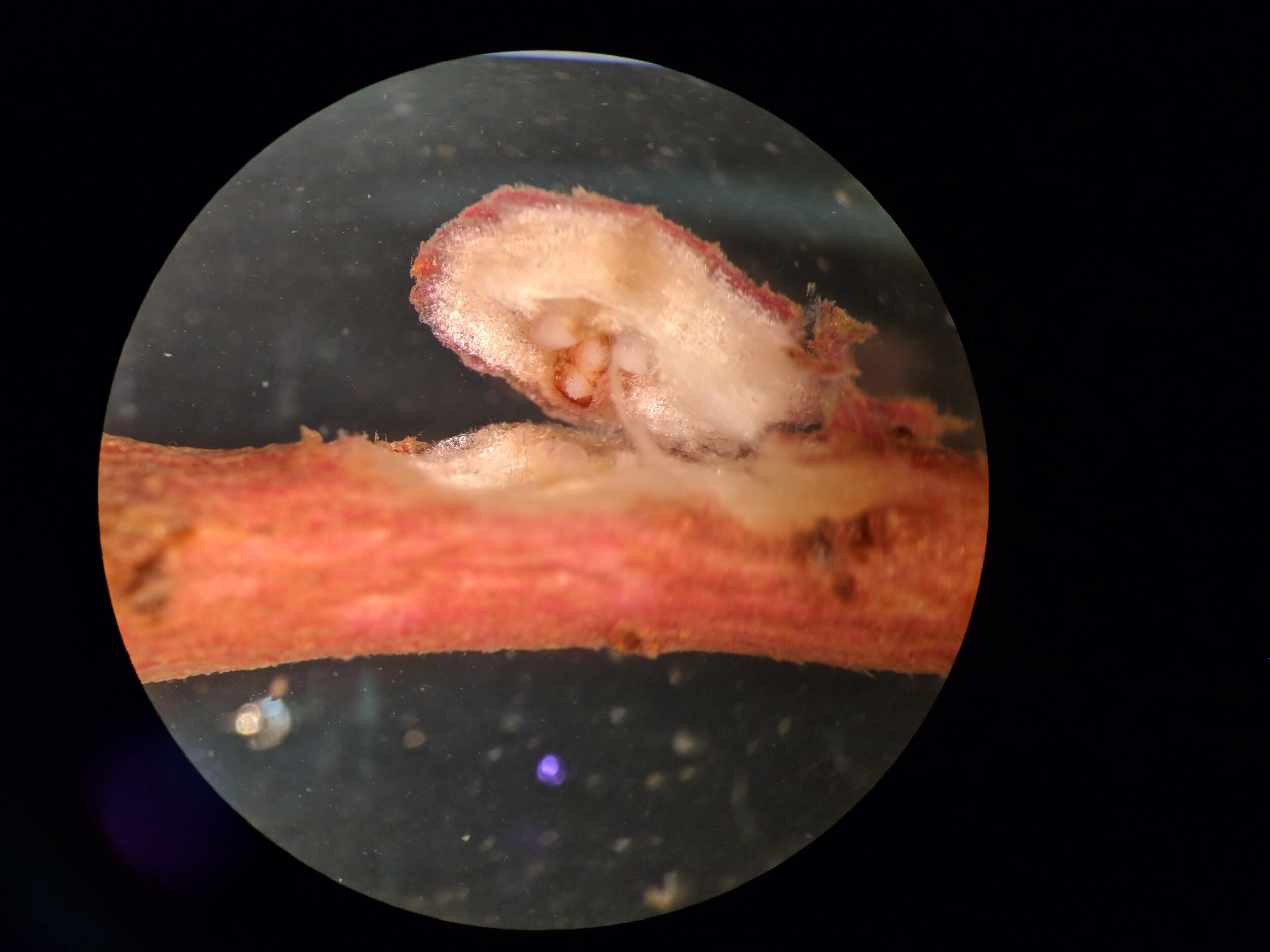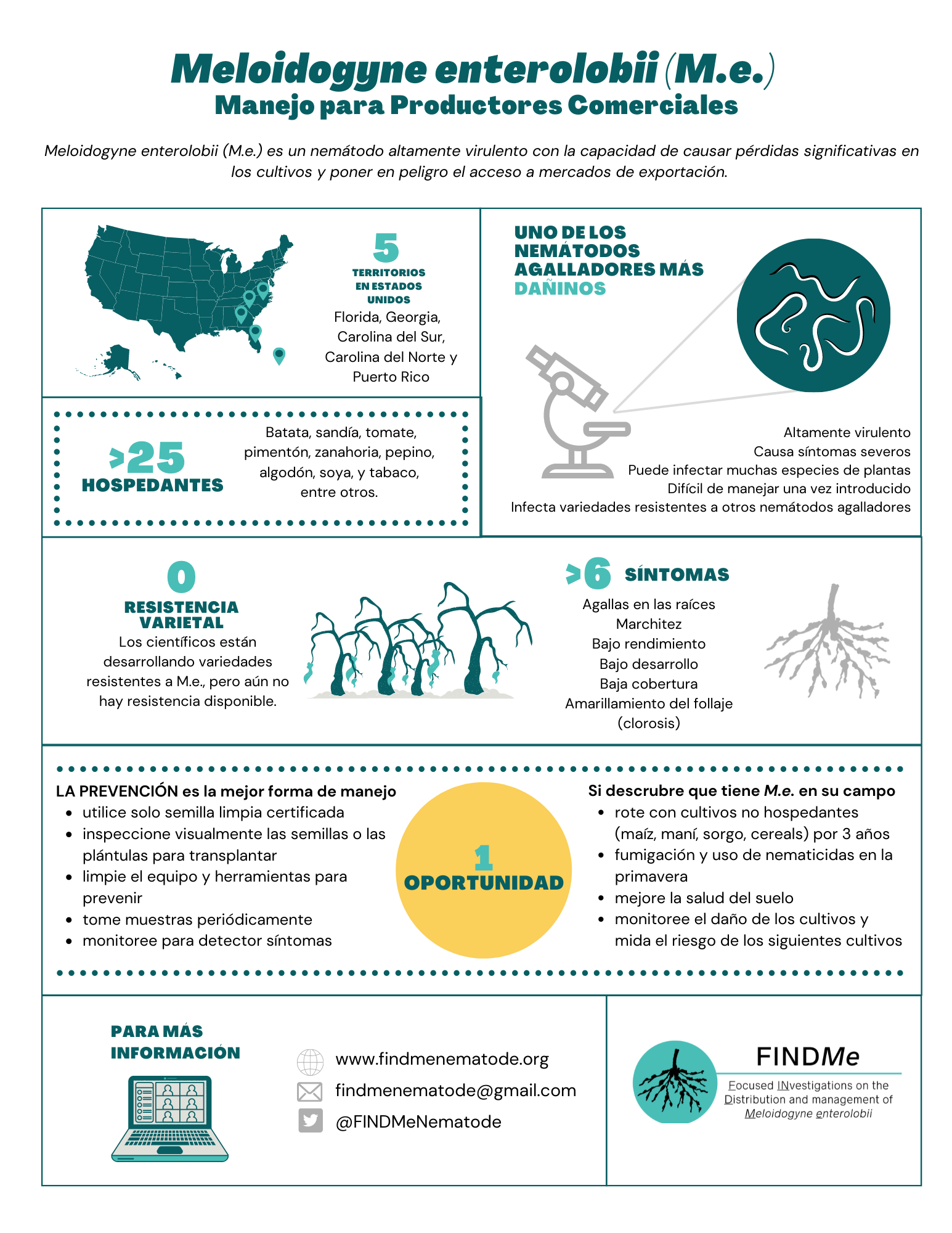What is Meloidogyne enterolobii?
Become an expert.
Meloidogyne enterolobii, or Guava Root Knot Nematode (GRKN) is a highly virulent root-knot nematode (RKN) species that is potentially devastating to specialty crop production in the southeastern United States. New resources and information are urgently needed to help farmers manage this aggressive pest.
Biology and Identification
Accurately identifying M.e. and understanding its basic biology will help us detect and manage this pest.
Hosts
M. enterolobii has many hosts, meaning it can infect many plant species. It is also highly virulent, meaning it causes severe symptoms. This combination of characteristics make this nematode especially problematic, leading some states and other countries to initiate quarantines.
Symptoms
Most symptomatic plant species present with root galling; however, there are many other symptoms you may observe such as leaf chlorosis (yellowing), stunted growth, and organ deformation. These symptoms usually prevent the sale of crops in both fresh and processed markets.
Publications
Access publications that have been generates as a result of work on this project
Distribution
Although M. enterolobii is thought to have originated in China, it spread throughout Brazil in the early 2000’s leading to the collapse of the guava industry. This earned it the common name ‘Guava Root Knot Nematode’. It is classified as a quarantine pathogen in the European Union and is now a mounting problem in the southeastern US.
Management
Prevention is the best strategy, but what should you do once M. e. has already established itself in your field? Techniques for managing M. e. infection can vary, including the use of nematicides, cover crops, rotations, and weed management
Soil Testing
For identification purposes, nematodes need to be extracted from root or soil samples. Samples can be processed for identification in a plant diagnostic clinic or nematology assay lab.
Scientific Articles
Access some of the key publications about Meloidogyne enterolobii.
Links to More Information
Access blogs and other articles written about M.e.






What’s in a Name?
Key: (A) Tree. (B) Pods on the ground. (C) An open pod with the seeds inside. (D) Leaves. Image source: Bacha, Flávia & Pupin, Rayane & Leal, Paula & Carvalho, Nilton & Franco, Gumercindo & Ítavo, C. & Riet-Correa, Franklin & Lemos, Ricardo. (2017). Experimental poisoning by Enterolobium contortisiliquum in sheep. Pesquisa Veterinária Brasileira. 37. 23-30. 10.1590/s0100-736x2017000100004 https://creativecommons.org/licenses/by-nc/4.0/
Did you know….
Meloidogyne enterolobii was named after its first characterized infection in China in the Pacara Earpod Tree (Enterolobium contortisiliquum) - a flowering tree in the pea family - earning it its first common name: Pacara Earpod Tree Root Knot Nematode.
From 1988 - 2012, scientists believed a closely-related species existed, named Meloidogyne mayaguensis. However, in 2012, other scientists proved that these nematodes were actually the same as Meloidogyne enterolobii.
Finally, the destruction caused by M. enterolobii in Brazil’s Guava industry in the 2000’s earned the species even more recognition and its common name: Guava Root Knot Nematode







